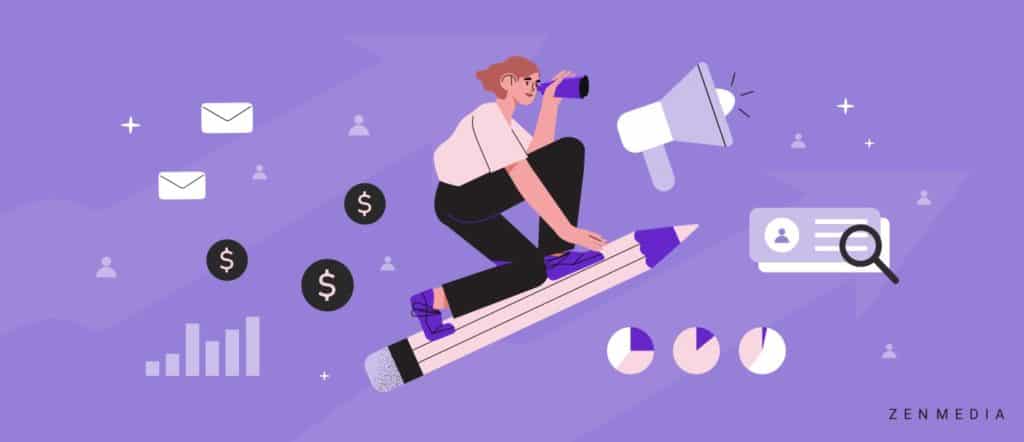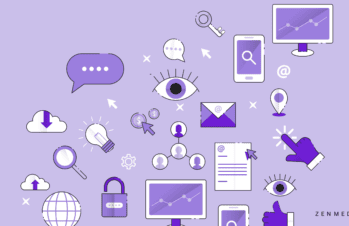In the early days of the internet, a successful digital marketing campaign meant putting out some cool videos, along with some well-placed ads; today, that same campaign would have to not only have videos (and lots of videos, preferably), but also a strong social media component, carefully considered SEO strategy, strategic content, and PR mentions in media outlets and on popular blogs. This evolution has made the role of a B2C and B2B marketing agency more crucial than ever.
Today, of course, things are a bit more complicated. From higher customer expectations around things like transparency and authenticity to the global pandemic that’s upended the way we shop, communicate, educate our kids, and more, succeeding in today’s digital landscape requires a whole new set of skills and tools. Every competent B2C and B2B digital marketing agency must navigate these challenges carefully and creatively to deliver effective campaigns.
Relevant post: 11 Successful PR Campaigns from Innovative Companies
What is a Digital Marketing Campaign?
A digital marketing campaign is a strategic plan developed by marketers to achieve a particular goal. This could mean anything from creating a buzz about a product launch to building brand loyalty among consumers. There are three main steps involved in a successful digital marketing campaign—understanding the audience, creating a strategy, and executing it.
The first step towards planning a digital marketing campaign is to understand your target market. You must know what you want to sell, how much money you want to make, and whom you want to buy your products. Once you have identified your target market, you need to define the problem you want to solve.
The next step is to develop a strategy. Your strategy defines the tactics you will use to execute your digital marketing campaign. Every tactic has its own purpose and objective. For example, one technique could be used to increase brand awareness while another could help you collect consumer feedback.
Finally, you need to implement your strategy. And while a B2C or B2B marketing agency can really help you drill down on this, it includes choosing the platforms where you will advertise, developing creative ideas, deciding on budget allocation, and selecting key personnel to work on the project.
Digital Marketing Campaign vs. General Marketing Campaign
A digital marketing campaign is much different than a traditional one. In fact, there are several differences between both types of campaigns. However, the main difference lies in the fact that a digital marketing campaign is more interactive, dynamic, and sustainable than a traditional one. This type of campaign is focused on building brand awareness and improving the online presence of a particular business.
Apart from this, a digital marketing campaign is much easier to measure and optimize compared to a traditional one. In addition, it is also cost effective and requires less resources. There are three main reasons why digital marketing campaigns are more useful than traditional ones.
First, a digital marketing campaign provides businesses with a greater opportunity to target specific groups of people. For example, you could target young adults, men, women, etc., depending on what you want to achieve. Secondly, a digital marketing campaign allows a business to build trust among customers, because it offers transparency about the brand. Thirdly, a digital marketing campaign helps companies improve customer retention rates, because it is easy to track whether a person visited a site or not.In need of some inspiration? Here are five of our favorite digital marketing campaign examples—you may recognize some oldies but goodies!
20 Best Digital Marketing Campaigns
1. Volkswagen’s The No Show Room
Interactivity is always a good way to take your digital marketing campaign to the next level, making it not only more fun for consumers to engage with, but also way more memorable.
Customers might remember something funny, moving, or fascinating that they saw—but they’ll remember something they participated in or experienced much better.
In this 2020 digital campaign, Volkswagen teamed up with the Swedish national ski team in order to create a live scavenger hunt, with clues hidden in their commercials. The company “hid” one of their Passat Alltracks deep in the frozen north of Sweden—no joke—and the first person to find it got to keep it.
The clues came in the form of cameos from the ski team members, who were shown trekking through spots around the car’s hiding place.
2. Old Spice’s The Man Your Man Could Smell Like
If you’re like us, you remember where you were in 2010 when you first saw this video. This digital marketing campaign, which launched with this priceless gem and continues to this day, is still the reigning king of hilariously weird marketing. Somehow, it hits that sweet spot just between “awesome” and “totally insane.”And the original video, which now has 52 million views on YouTube, was just the beginning. Social media profiles, additional commercials, the “Make a Smellmitment” tagline on their website—all come together to form a seamlessly integrated digital presence. Old Spice even created a Choose Your Own Adventure game on Instagram, further marking this brand’s digital marketing campaign as one for the ages.
3. Chase for Business’ Bizmobile
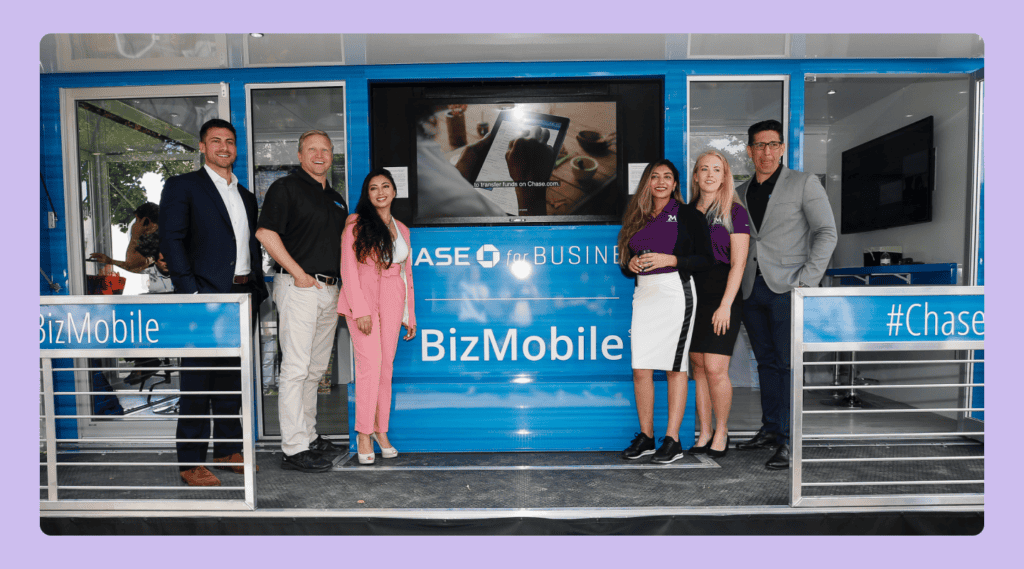
Who says banking has to be boring? In 2018, Chase for Business proved otherwise with the help of Zen Media’s strategic and creative “Bizmobile” campaign, taking financial advice on a cross-country road trip that small business owners won’t soon forget. Instead of waiting for entrepreneurs to come to them, Chase hit the road in a 28-foot mobile business center, bringing expert advice directly to the streets. The Bizmobile rolled up to co-working spaces, startup events, and festivals nationwide, offering small business owners on-the-spot guidance on marketing, capital access, and expense management.
The campaign was a hit, catching the eye of local micro-influencers and even grabbing headlines in major publications like Entrepreneur and Forbes. By focusing on what small business owners value most—their time—Chase positioned itself as the ultimate “wingman” for entrepreneurs on the go. This creative approach to experiential marketing not only saved business owners precious time and resources but also allowed Chase to deliver tailored, genuinely useful expertise in a memorable, engaging way.
4. Oreo’s social media campaigns

Starting in 2013, Oreo ruled social media. One of the reasons they succeeded so well is the incredible speed with which the brand is able to put out tweets, posts, images, and more, starting with their famous “You can still dunk in the dark” tweet that they sent out during the 2013 Superbowl power outage. According to AdAge, that tweet was conceived, designed, and approved within minutes.The combination of this up-to-the-minute cultural relevance with their fun—bordering on whimsical—the tone has proven a winner in the social media sphere. Just look at their ongoing digital campaign, Wonderfilled, to see what we’re talking about.
5. Always’ “Like a Girl” campaign
Is there anyone who didn’t tear up during this video? Showing how girls’ confidence takes a nosedive once they hit puberty, Always’ commercial launched the company’s massive efforts to help teach confidence to girls and young women through a variety of means.
They partnered with TED to create a series of educational videos on confidence that will be shared with teachers and students worldwide and even created the Always Confidence Curriculum, which was unveiled at the Always #LikeAGirl Confidence Summit in 2014. Meanwhile, the company continued to push out short, inspiring messages via the hashtag #LikeAGirl as an online marketing campaign push.
Motivational, authentic, potentially world-changing: that’s a win for any digital campaign in our book.
6. Dippin’ Dots’ Sweet Comeback
Who knew that a few grumpy tweets from a White House Press Secretary could lead to one of the sweetest PR victories of all time? In 2017, when Sean Spicer’s old tweets criticizing Dippin’ Dots resurfaced, the flash-frozen ice cream brand found itself in an unexpected spotlight. But instead of melting under pressure, they served up a PR strategy that was as cool as their product.
Dippin’ Dots and the Zen Media team whipped up an “Open Letter to Sean Spicer” that was equal parts witty and welcoming. This masterpiece of crisis management not only defused the situation but turned it into a viral sensation. The letter, along with a savvy social media campaign, racked up over 10 million views and reached a staggering 1.4 billion people.
The results were a veritable sugar rush. Dippin’ Dots saw an 8,000% increase in brand mentions on X (formerly Twitter), with over 31,300 tweets mentioning the company. Major media outlets couldn’t resist covering this delicious story, further amplifying the positive buzz.
By responding to criticism with humor and grace, Dippin’ Dots created a blizzard of goodwill that any brand would envy. Now that’s a sweet success!
7. Chipotle’s “Scarecrow” and “Back to the Start” Videos
Chipotle made its name not just by serving seriously delicious burritos, but by putting its commitment to responsible food first and foremost in its marketing. This commitment was first introduced to the world—on a large scale, at least—in their first-ever TV ad buy, a 2013 animated commercial that showed a farmer rebelling against the factory farming system and taking his farm back to basics—“back to the start.”The video created a huge response, earning Chipotle legions of new fans and online brand ambassadors who related to Chipotle’s “food with integrity” tagline. The brand’s latest venture into online marketing campaigns is an animated short called “The Scarecrow,” which spawned its own social game.
8. Airbnb’s Post-COVID User-Generated Content
Airbnb is one of the most popular accommodation platforms around the world. Its success lies in its ability to provide access to unique experiences; whether it’s staying in an artist’s loft in Brooklyn or a castle in Scotland.
Airbnb has upended the accommodation market largely thanks to their digital advertising strategy. While the brand has often leveraged a user-generated content (UGC) strategy featuring images, how-to posts, tourist guides, and more, one great example truly stands out. In early 2021, the brand launched its first global marketing campaign in more than 5 years in response to the COVID-19 pandemic and lockdown. Their ads were wildly successful, featuring UGC that inspired nostalgia and feelings of hope during a time when many were fearful and uncertain.
9. Airbnb’s Barbie Malibu DreamHouse Campaign
Airbnb has a reputation for deploying campaigns that earn a lot of attention—and that’s why it’s on this list twice! In 2023, Airbnb unveiled a real-life, human-sized Barbie Malibu DreamHouse (hosted by Ken, of course)! It’s the stuff of dreams for those who have cherished memories of Barbie from their past, and it’s also capturing the hearts of new generations. In a brilliant marketing move, Airbnb and Barbie joined forces to offer an unforgettable experience—a stay in a bright-pink mansion located in California.
This collaboration was all about creating an unforgettable experience that sparks exclusivity and desire. The vibrant pink mansion quickly went viral, captivating people of all ages and generations. The campaign capitalized on the nostalgia and emotional connections people have with the doll, leading to an organic and widespread word-of-mouth promotion that generated massive buzz for the upcoming Barbie movie. This partnership proved to be a win-win for both Airbnb and the film’s marketing campaign, allowing them to reach a broader audience and bask in each other’s popularity.
10. Gillette’s “The Best Men Can Be” Campaign
In 2017, Gillette launched a campaign called “The Best Men Can Be.” The tagline was simple: “Men are doing better. But we still have work to do.” And the ads showed how men could do better. They included examples like “men being held accountable,” “men speaking up about domestic abuse,” and “men helping each other.”
The idea behind the campaign was to tackle issues such as sexual harassment, racism, homophobia, and bullying. However, the ads weren’t just about changing attitudes; they also wanted to change behaviors. So Gillette partnered with Change the Terms and the National Center for Women & Policing to launch #MyGilletteChallenge. The goal was to encourage men to use the hashtag every day to talk about what they’re doing to help make the world a safer place.
#MyGilletteChallenge became one of the most popular hashtags on Twitter. More than 2 million people used the hashtag during the month of October 2018 alone.
11. American Express and Building Authority
In 2016, American Express launched a major content marketing initiative to position itself as a trusted source of information about personal finance. To do so, the company set up a blog called Trends & Insights. The goal was to provide useful information to consumers while giving the company credibility as an expert in the field.
The project had a lot riding on it. After all, the company had been around since 1850 and had a long history of providing financial products and services to customers. So, it needed to make sure that people knew it was still there. And, it knew that to achieve that, it needed to become an authority in the space.
The company turned to HubSpot to develop a plan for launching and promoting its blog. The team used HubSpot’s Content Management System (CMS), Sitefinity CMS, and Analytics tools to create a template that allowed them to easily manage the content on the site. Then, they built a landing page that included calls to action for visitors to read more about topics like credit cards, small business loans, and more.
12. Aeroflow’s Boob Bus Collab and Nationwide Tour
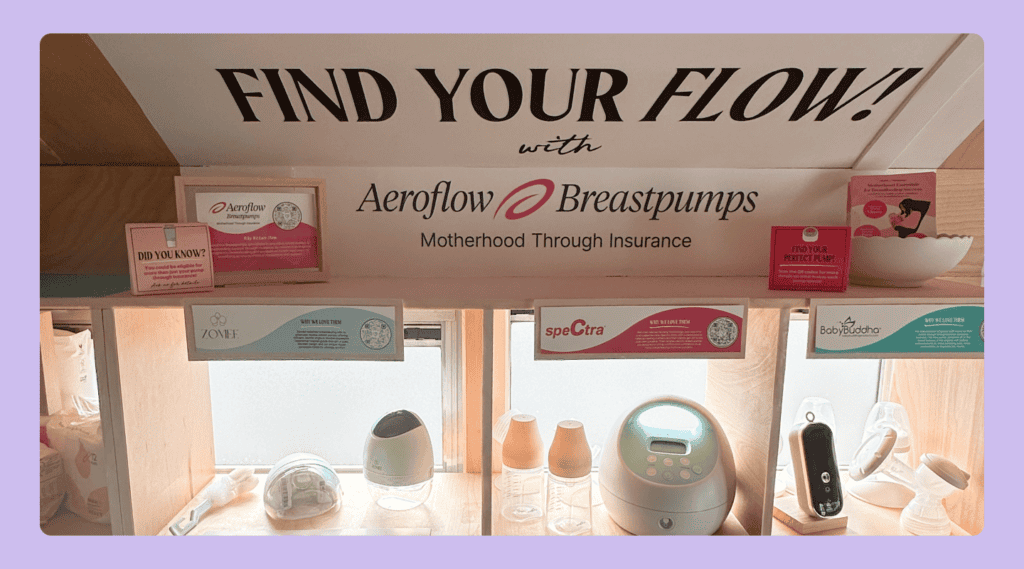
Aeroflow Breastpumps and Pumpspotting know that every mom deserves support—especially when it comes to the joys and challenges of breastfeeding and pumping. As Pumpspotting planned its 2024 “Feel Better, Feed Better” bus tour, Aeroflow Breastpumps worked with the Zen Media marketing team to become an active Pumpspotting partner, having their team members—and members from the Zen Media team—board the bus, help out at major pregnancy expos, and support moms across the country while raising brand awareness.
Picture this: a teal and white bus (affectionately named “Barb the Boob Bus”) decked out as a cozy mobile lactation room, cruising across the country to bring breastfeeding resources, education, and a whole lot of fun to new moms. This resource-on-wheels visited 16 cities, offering moms a safe haven for nursing, pumping, advice, and connecting with other parents.
During this clever collaboration, Zen Media’s on-bus team was able to launch the Aeroflow Breastpumps “MOMents” campaign, interviewing real moms about their most memorable moments as soon-to-be and new moms (get it, MOMents?).
To further add to the fun and awareness, Zen Media’s team worked with Aeroflow Breastpumps to create branded Bus Passes with QR codes to the Aeroflow Breastpumps website and run Aeroflow Breastpumps giveaways for Pumpspotting visitors, rewarding mamas who shared their MOMents with pumping supplies, baby blankets, and more. Live posting on social media, teasers, TikToks, and more helped further turn this in-person tour into a digital campaign that continues to draw social media followers and qualified leads.
By bringing their expertise directly to the streets, Aeroflow and Pumpspotting turned what could have been a routine marketing campaign into a nationwide celebration of motherhood. With stops from Charlotte to Chicago, this tour proved that when it comes to supporting breastfeeding moms, the sky’s the limit…or in this case, the open road!
13. Slack’s and Focusing on Solutions
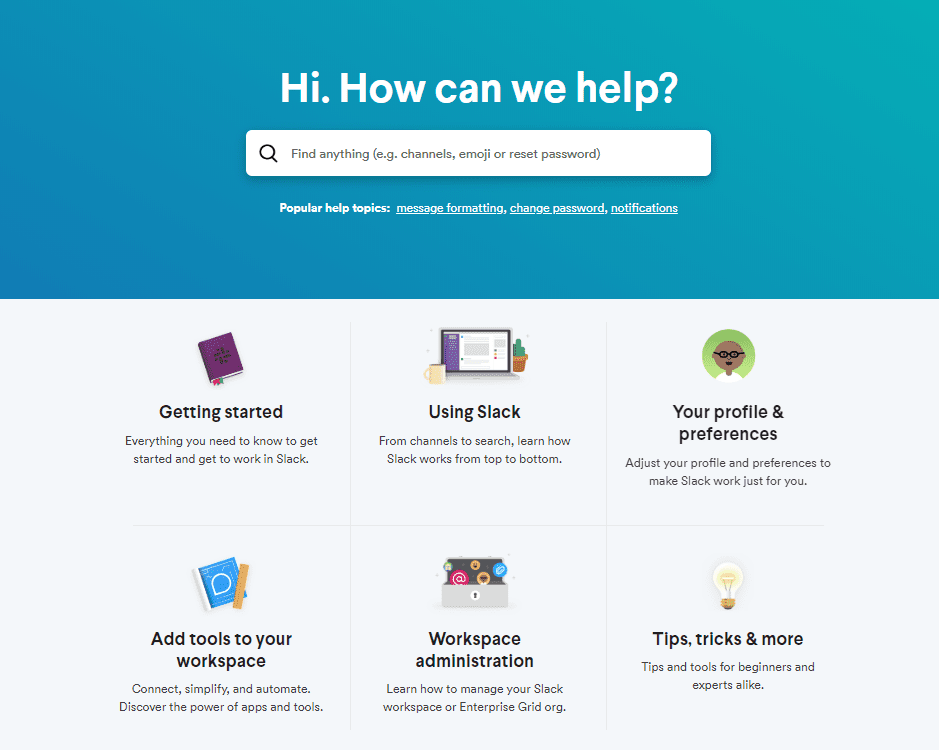
Slack’s journey from a failed gaming project to a workplace communication giant represents one of tech’s most fascinating marketing success stories. Launched in 2013, what makes Slack’s approach particularly noteworthy is that they achieved unicorn status without following the traditional B2B marketing playbook—they didn’t even hire a Chief Marketing Officer until they were already worth over a billion dollars. Instead, Slack built its empire through an unconventional combination of word-of-mouth marketing and a freemium model that prioritized user experience over aggressive sales tactics.
The company’s content marketing strategy brilliantly balanced education with product awareness. Rather than pushing hard sales messages, Slack focused on creating valuable content that naturally showcased their product’s capabilities. For example, their blog (cleverly named “Several People Are Typing”) became a hub for productivity tips and collaboration insights, while their integration-focused SEO strategy ensured they appeared in search results whenever users looked for tools that could connect with Slack. This approach helped them maintain high search visibility without investing heavily in traditional SEO tactics.
What truly set Slack apart was their multi-channel approach to building authentic connections with users. The Slack Resources Library highlighted organizations that successfully leveraged Slack and positive customer success stories. At the same time, their social media presence across LinkedIn, Twitter, Instagram, and YouTube struck a balance between professional and relatable content, while their customer stories highlighted real-world applications of their platform.
By 2024, these strategies (alongside being a genuinely useful product!) had helped Slack acquire over 38.8 million daily active users and 200,000 paying customers, including 77 Fortune 100 companies.
14. Red Bull’s “Stratos” Campaign
Red Bull’s “Stratos” campaign in 2012 was an ambitious project that involved sponsoring the world-record-breaking space jump by Felix Baumgartner. The campaign generated huge buzz and media attention, with 8 million live viewers and over 50 million views in the first 48 hours. It was a masterclass in event marketing and content creation, as Red Bull captured the entire event, from the preparations to the jump itself, and turned it into a gripping and emotional story shared worldwide. The campaign not only helped to cement Red Bull’s position as a leader in extreme sports, but it also helped to establish the brand as one that is willing to take risks and push boundaries.
15. Coca-Cola’s “Share a Coke” Campaign
Coca-Cola’s “Share a Coke” campaign in 2013 was a simple yet effective campaign where they replaced the brand’s logo on their bottles with popular names like “Sarah” or “Mike” and encouraged consumers to find their own name or the name of a friend. This campaign helped increase sales and personalization with the consumer. By making the product more personal and relevant to the individual consumer, Coca-Cola was able to tap into people’s emotions and create a sense of nostalgia and connection with the brand. The campaign was hugely successful and was eventually rolled out in more than 80 countries worldwide. It was a great example of how a small change to a product can make a big impact on consumer engagement and sales.
16. Burger King “Whopped Detour” Campaign
The 2018 Whopper Detour campaign was a clever marketing strategy that offered a one-cent Whopper burger to customers who placed an order through the Burger King app while they were within 600 feet of a McDonald’s location. By using geolocation technology, Burger King was able to target McDonald’s customers and offer them a compelling reason to try Burger King instead. The campaign generated a lot of buzz on social media and news outlets, driving traffic to Burger King locations and boosting sales. The campaign was successful because it was a creative way to differentiate Burger King from its competitors and created a sense of urgency among customers to try the promotion before it ended.
14. Under Armour’s “I Will What I Want” campaign
The “I Will What I Want” campaign was a powerful marketing strategy that targeted women athletes and their stories of perseverance and determination. The 2014 campaign featured ads showcasing Misty Copeland, a ballerina who faced numerous obstacles on her journey to become a professional dancer. The campaign also featured Gisele Bundchen, a model and mother who faced criticism for her athletic ability. The message of the campaign was that women can overcome any obstacle and achieve their goals, and the campaign resonated with consumers across gender and age demographics. The campaign helped to establish Under Armour’s position as a brand that supports and empowers women, and the message was reinforced through social media and influencer partnerships.
18. Dollar Shave Club’s “Our Blades are F***ing Great” Campaign
The “Our Blades are F***ing Great” campaign was a bold marketing strategy that introduced Dollar Shave Club’s subscription service to consumers. The 2012 campaign featured a humorous video starring the company’s founder, Michael Dubin, who presented the benefits of the subscription service in a witty and irreverent way. The video went viral and generated millions of views on YouTube, helping to establish Dollar Shave Club as a disruptive force in the men’s grooming industry. The campaign resonated with consumers because it offered a unique value proposition and communicated the company’s brand personality in an entertaining way.
19. “Calling JohnMalkovich.com” Campaign
Squarespace’s 2017 “Calling JohnMalkovich.com” campaign was a clever marketing strategy that showcased the ease of use and website-building capabilities. A play on the 1999 Spike Jonez movie “Being John Malkovich,” the campaign featured a Super Bowl ad in which actor John Malkovich tries to register his name as a domain, only to find that it’s already taken by a Squarespace user. The ad was entertaining and memorable, generating significant buzz on social media and helping to establish Squarespace as a user-friendly platform for creating websites.
The campaign resonated with consumers because it showcased the company’s product in a humorous and relatable way, while also highlighting the importance of having a website in today’s digital age.
20. Sephora’s Beauty and Tech Makeover
Who says you can’t try before you buy in the digital age? Sephora’s 2016 groundbreaking digital marketing strategy proved that even lipstick can get a high-tech makeover.
While many brick-and-mortar stores are struggling in the e-commerce era, Sephora began painting the town red with its innovative omnichannel approach. The cosmetics giant created an app that’s like having a makeup counter in your pocket. Using AI and augmented reality, shoppers can now virtually test products without leaving their couch.
But Sephora didn’t stop there. Their marketing efforts have them sliding into your DMs on Instagram, dancing with you on TikTok, and greeting you in-store—all while using your data to serve up personalized beauty recommendations faster than you can say “contour.”
The result? A seamless shopping experience that’s as smooth as their best foundation. By giving customers the confidence to shop online and the flexibility to engage on their terms, Sephora’s digital strategy isn’t just pretty—it’s pretty brilliant. What a way to help your audience put their best face forward!
Wrapping Up
The best digital marketing campaigns reach out to people on a personal level through capturing and emotional content. These campaigns make sure that their customers are heard, acknowledged, and remembered.
Think about creating great content that is authentic and useful. If you’re struggling to find good content ideas, try looking back at old posts on social media. Remember that every business started somewhere, and many are still trying to grow. Use nostalgia to connect with early fans of your business and show that you’re still growing and changing along with them.
The best way to put together a successful digital marketing strategy is to start with a clear understanding of what your goals are. If you want to increase sales, generate leads, build awareness, or engage with existing clients, consider what type of content will help you achieve those goals. Once you know what you’re trying to accomplish, you’ll be able to make better decisions about where to focus your efforts.
Feeling inspired to take your own marketing to the next level? If you’re ready to see how a world-class B2B digital marketing agency can elevate your brand, contact us today. Our experts would love to get started on your next “best ever” digital marketing or digital PR campaign!Related Reading: What Goes Into a Full Digital Marketing Plan?

